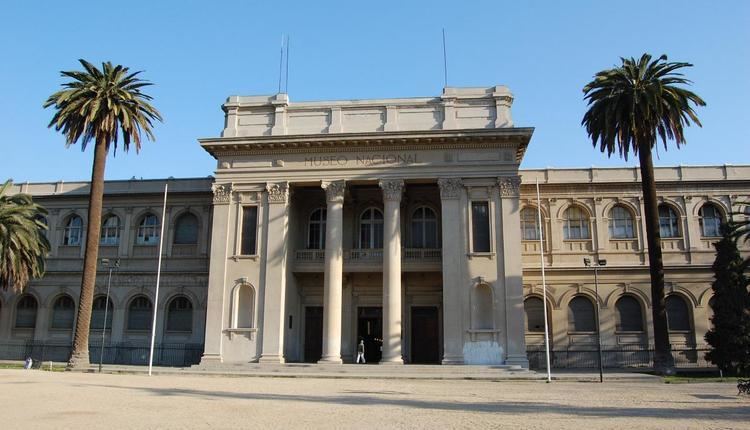Phone +56 2 2680 4603 | Founder Claude Gay | |
 | ||
Address Parque Quinta Normal, Santiago, Región Metropolitana, Chile Hours Open today · 11AM–5:30PMSunday11AM–5:30PMMondayClosedTuesday10AM–5:30PMWednesday10AM–5:30PMThursday10AM–5:30PMFriday10AM–5:30PMSaturday10AM–5:30PM Similar Museo Histórico Nacional, Quinta Normal Park, Museum of Memory and Hum, Museo Chileno de Arte Prec, Chilean National Museum Profiles | ||
Santiago vacation travel guide expedia
The Chilean National Museum of Natural History (Spanish: Museo Nacional de Historia Natural or MNHN) is one of three national museums in Chile, along with the Museum of Fine Arts and the National History Museum. It is located in Quinta Normal Park.
Contents
History
The museum is one of the oldest natural history museums in South America. It was founded on September 14, 1830 by the French naturalist Claudio Gay, commissioned by the Chilean government. Its original mandate was the biology and geography of Chile, with a concentration on crops and mineral resources.
In 1889 departments of botany, zoology, and mineralogy were established. The National Museum Bulletin (Boletín del Museo Nacional) was first published in 1908, and continues today under the title Bulletin of the National Museum of Natural History (Boletín del Museo Nacional de Historia Natural).
Earthquakes in August 1906 and April 1927 have damaged the museum.
Humberto Fuenzalida Villegas was director of the museum until Grete Mostny became director in 1964. She led the museum until 1982.
Exhibits
The museum currently has twelve permanent exhibits:
Departments
The five departments are botany, zoology, enthomology, anthropology, and paleontology.
The department of botany includes a herbarium of 3700 species dating from 1830. 90% of the type specimens of Chilean species are housed here.
The zoology department contains fourteen holotypes, mainly Chilean marine and freshwater fish.
The anthropological department emphasizes the archeology of Central Chile through the Inca Empire and cultural artifacts of modern or recently extinct peoples of Chile and Easter Island. One of its duties is the caretaking of the Plomo Mummy.
